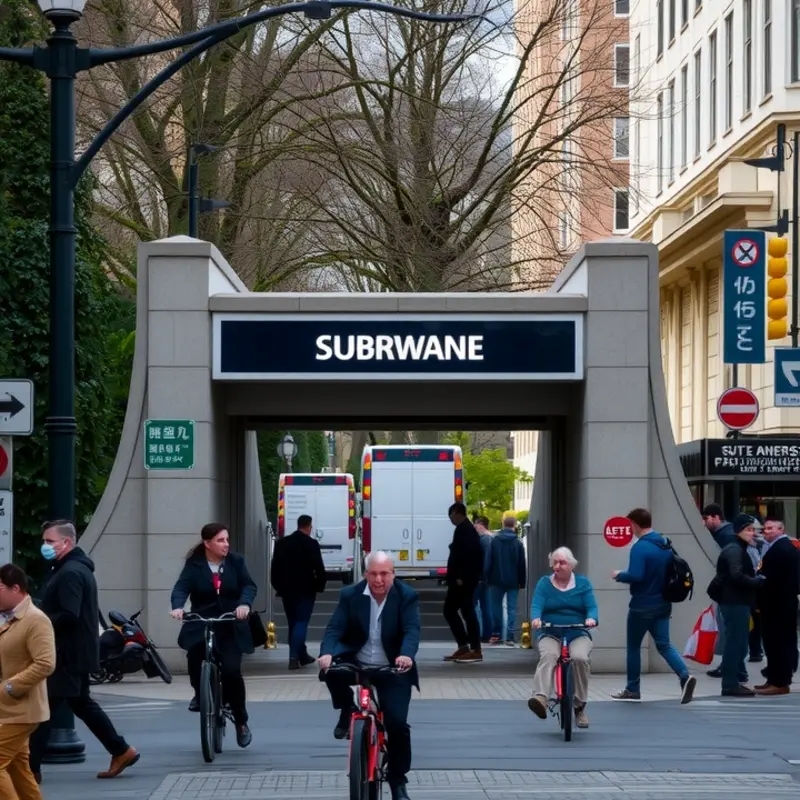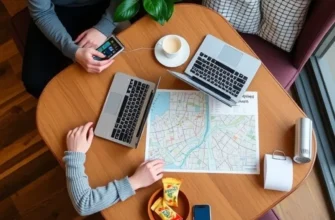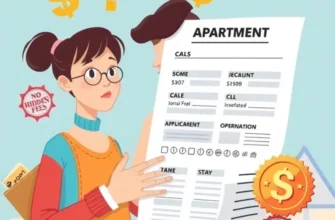Choosing an apartment is a rite of passage for many young adults entering the world of independent living. Whether you’re a first-time renter, a young professional, a couple, or a family, one crucial aspect often gets overlooked in the excitement—your daily commute. Picture this: you find the perfect apartment, only to discover that your morning routine now involves a two-hour trek to work. Yikes! In this guide, we tackle how to choose apartments by commute to avoid the headache and maximize your work-life balance. You’ll discover how to evaluate public transport options, consider traffic patterns, and even measure your tolerance for that morning coffee in a packed subway. So buckle up as we embark on this journey to find your ideal living space without the nightly stress of being stuck in traffic.
Commute Calculations: Average Time vs. Ideal Time

Understanding commute times is crucial for young renters aiming for a balance between work and personal life. Delving into average commute times is merely the starting point; finding the ideal time that aligns with your lifestyle is the end goal. This requires a meticulous examination of various factors like public transport availability, traffic patterns, and your own daily schedule.
Start by evaluating your work hours and daily routine. If you’re an early riser who wants extra time for morning workouts, consider how a shorter commute might grant you this flexibility. Conversely, if you prefer evenings for leisure, a slightly longer commute might not affect you.
Calculate your average commute time by employing mapping tools. Estimate drive or public transport times during peak hours. Be sure to factor in traffic conditions and any construction zones commonly affecting your route. This will form a baseline for evaluating potential living spaces.
Once you understand your usual commute, determine your ideal commute time. Reflect on personal priorities. Do you value more leisure time at home, or do you prefer a more affordable apartment even if it’s slightly farther away? These preferences should guide your ideal time calculation.
Public transportation plays a significant role here. Access to efficient and reliable transit can substantially reduce perceived commute strain, even if the actual time is longer. Evaluate transportation options thoroughly. Consider their frequency, coverage area, and how they sync with your work schedule. Keep in mind factors such as distance from your workplace and driving times in busy areas.
For those leaning towards driving, factor in the cost and availability of parking spaces. This can notably impact convenience and costs over time. If you are unfamiliar with how parking arrangements work in your desired location, you might find our guide on apartment move-in essentials helpful.
Assessing and adjusting your expectations around commuting time involves both practical considerations and lifestyle choices. Gauge how commuting patterns interact with your other goals like fitness, social life, or relaxation. This comprehensive approach ensures you make informed decisions when selecting an apartment suited both to your needs and lifestyle aspirations.
Transport Accessibility: Finding the Right Fit

When seeking a new apartment, transport accessibility often tops the list of important factors. A convenient commute can drastically improve your quality of life, saving valuable time and reducing stress. Proximity to bus lines and subway stations is vital. Living near a major transit hub can offer flexibility and a variety of travel options. This can be especially beneficial if you do not own a car, as public transportation becomes your primary means of getting around.
Bicycle-friendly areas are another key aspect to consider. Many cities are enhancing their network of bike trails and lanes. This not only supports a healthy lifestyle but can also offer an efficient and eco-friendly commuting option. When evaluating an apartment, check if it provides secure storage for bicycles. This is essential for ensuring the safety of your bike.
Walkability is another critical component when evaluating transport accessibility. A neighborhood rich in amenities such as grocery stores, cafes, gyms, and parks can add convenience and value to daily life. Well-designed, pedestrian-friendly areas encourage walking over short drives, promoting both physical activity and a stronger connection to the community.
Some renters might still prefer driving. Therefore, it’s important to look for apartments with ample parking facilities. Consider the cost and availability of parking, as these can vary significantly across different neighborhoods. Ensure that parking is secure and offers easy access to your apartment.
Alternatives exist for those who wish to avoid vehicle ownership but still need occasional access to a car. Car-sharing services and rental options are becoming more widespread, allowing flexible use without the burdens of maintenance and insurance.
Balancing these factors might seem daunting, but tools and apps designed to calculate commute times from multiple apartments can be immensely helpful. Opting for an apartment that shortens your travel time can elevate your daily routine, allowing for extra moments of relaxation and more opportunities to engage in leisure activities.
The right transport accessibility doesn’t just cater to immediate needs. It can enhance your living experience and contribute to a sustainable lifestyle. A strategic location can be pivotal in reducing stress related to daily travel, offering you more time to enjoy your new space and its surroundings.
Interested in learning more about how to enhance your apartment life? Check out our article on organizing your space effectively with baskets here.
Final words
Ultimately, your living space should enhance rather than hinder your lifestyle. A little planning can go a long way in ensuring that your commute fits your daily rhythm. Consider your transport options, calculate your commute time, and prioritize locations that support your lifestyle. Happy hunting! May your apartment be close to your dreams (and your workplace).









